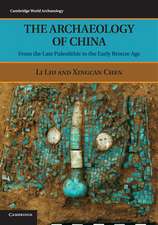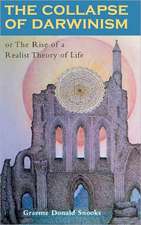The Dynamic Society: The Sources of Global Change
Autor Graeme Snooksen Limba Engleză Hardback – 28 mar 1996
Preț: 1191.93 lei
Preț vechi: 1673.99 lei
-29% Nou
Puncte Express: 1788
Preț estimativ în valută:
228.10€ • 247.69$ • 191.61£
228.10€ • 247.69$ • 191.61£
Carte tipărită la comandă
Livrare economică 22 aprilie-06 mai
Preluare comenzi: 021 569.72.76
Specificații
ISBN-13: 9780415137300
ISBN-10: 0415137306
Pagini: 512
Dimensiuni: 156 x 234 x 39 mm
Greutate: 1.02 kg
Ediția:1
Editura: Taylor & Francis
Colecția Routledge
Locul publicării:Oxford, United Kingdom
ISBN-10: 0415137306
Pagini: 512
Dimensiuni: 156 x 234 x 39 mm
Greutate: 1.02 kg
Ediția:1
Editura: Taylor & Francis
Colecția Routledge
Locul publicării:Oxford, United Kingdom
Public țintă
Postgraduate and UndergraduateNotă biografică
Graeme Donald Snooks is the Coghlan Professor and Head of the department of Economic History at the Institute of Advanced Studies, Australian National University. He has published widely on a number of central issues in economic history and is editor of a number of prestigious book series and journals
Cuprins
1. Chariots of Change Part One: The Tide of Time 2. Game of Life 3. Players in the Game 4. Dynamics of Being Part Two: Shadow of the Tower 5. Tower of Babel 6. Quest for Meaning Part Three: Wheel of Fire 7. Riders in the Chariot 8. Family of Man 9. Maker of the Wheel 10. Horsemen of War 11. Conjurers of Commerce 12. The Dynamic Society 13. Edge of Darkness? Glossary Bibliography
Recenzii
'I have greatly enjoyed reading this book ... The Dynamic Society gives evidence of an informed and creative mind, and its theories are worthy of serious intellectual engagement.' - History of Economics Review
Descriere
This thought-provoking and controversial work examines the nature and process of change in human society over the past two million years and concludes with probable future developments.

























